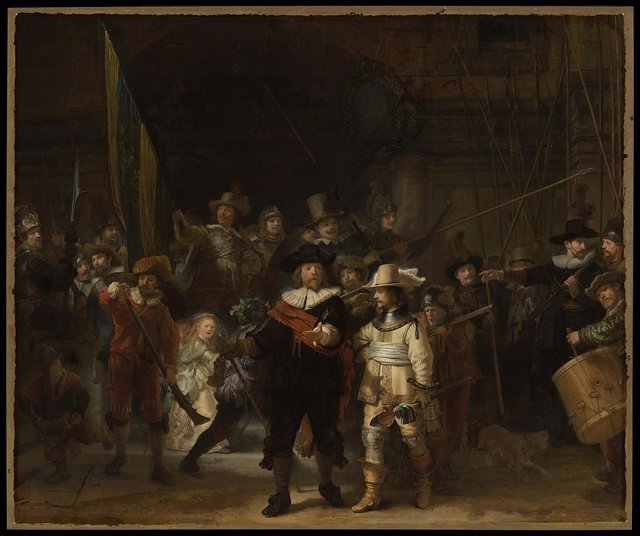Jan. 17 () –
Analysis in state-of-the-art laboratories has revealed a rare lead compound (called lead formate) in Rembrandt’s masterpiece ‘The Night Watch’.
This pioneering discovery in the history of the scientific study of painting provides new data on the pictorial technique of the 17th century and the history of the conservation of the masterpiece. The study is published in Angewandte Chemie.
the night watch, painted in 1642 and exhibited today at the Rijksmuseum in Amsterdam (Netherlands), It is one of Rembrandt’s most important masterpieces and his greatest work of art. As part of Operation Nightwatch 2019, the largest research and conservation project ever undertaken for Rembrandt’s masterpiece, an international research team joined forces to study how painting materials react chemically and over time.
The team of scientists combined multi-scale imaging methods to chemically study the materials used by Rembrandt in The Night Watch. An X-ray scanning instrument developed at the University of Antwerp, Belgium, was applied directly to the painting, while small fragments taken from the painting were studied with synchrotron X-ray microprobes, at the ESRF, the European Synchrotron (France) and the PETRA-III facility (Germany).
These two types of analyzes revealed the presence of an unexpected organometallic compound: lead formates. This compound had never been detected before in historical paints: “In paints, lead formates have only been reported once in 2020, but in model paints (models, fresh paints). And here’s the surprise: We not only discovered lead formates, but we also identified them in areas where there is no lead, white, yellow pigment. We think that they probably disappear quickly, which is why they had not been detected until now in Old Master paintings,” explains Víctor González, CNRS researcher at the Laboratory of Supramolecular and Macromolecular Photophysics and Photochemistry (PPSM) (CNRS/ENS Paris-Saclay) and first author of the work.
Why hasn’t this one disappeared? For Katrien Keune, scientific manager of the Rijksmuseum and professor at the University of Amsterdam (Netherlands), this finding is key to better understanding Rembrandt: “In Operation Night Watch we focus on Rembrandt’s pictorial technique, the state of the painting and how we can best preserve it for future generations Lead formate gives us valuable new clues about the possible use of lead-based oil paint by Rembrandt and the possible impact of oil varnishes from earlier conservation treatments , as well as on the complex chemistry of historical oil colours.”
What is the origin of this compound? Can you provide insight into the recipes from Rembrandt’s workshop or shed light on the chemical mechanisms active in the old paint layers? To answer these questions, scientists they studied fragments taken from The Night Watch and model samples prepared in the laboratory simulating the painter’s formulas.
They worked with the hypothesis that Rembrandt used an organic medium (linseed oil) that contained dissolved lead oxide (PbO litharge) to enhance its drying properties. “Thanks to the unique analytical capabilities of the ESRF, the world’s brightest synchrotron light source, we were able to map the presence of formates at the micrometer scale and follow their formation over time,” he explains. it’s a statement Marine Cotte, ESRF scientist. The spatial organization of the microscale compounds and the dynamics of their formulation allowed the researchers to suggest new hypotheses about the chemical conditions of their in situ crystallization in ancient paint layers.
“In addition to providing information on Rembrandt’s pictorial techniques, this research opens new avenues on the reactivity of historical pigments and, therefore, on heritage conservation“, explains Koen Janssens, a professor at the University of Antwerp.
The team’s next step is to continue studying the origin of these formates and see if they could also come from previous restoration treatments.


![[Img #74664]](https://thelatestnews.world/wp-content/uploads/2024/12/James-Watson-The-controversial-genius-behind-the-double-helix-150x150.jpg)








![[Img #74664]](https://thelatestnews.world/wp-content/uploads/2024/12/James-Watson-The-controversial-genius-behind-the-double-helix-300x200.jpg)

